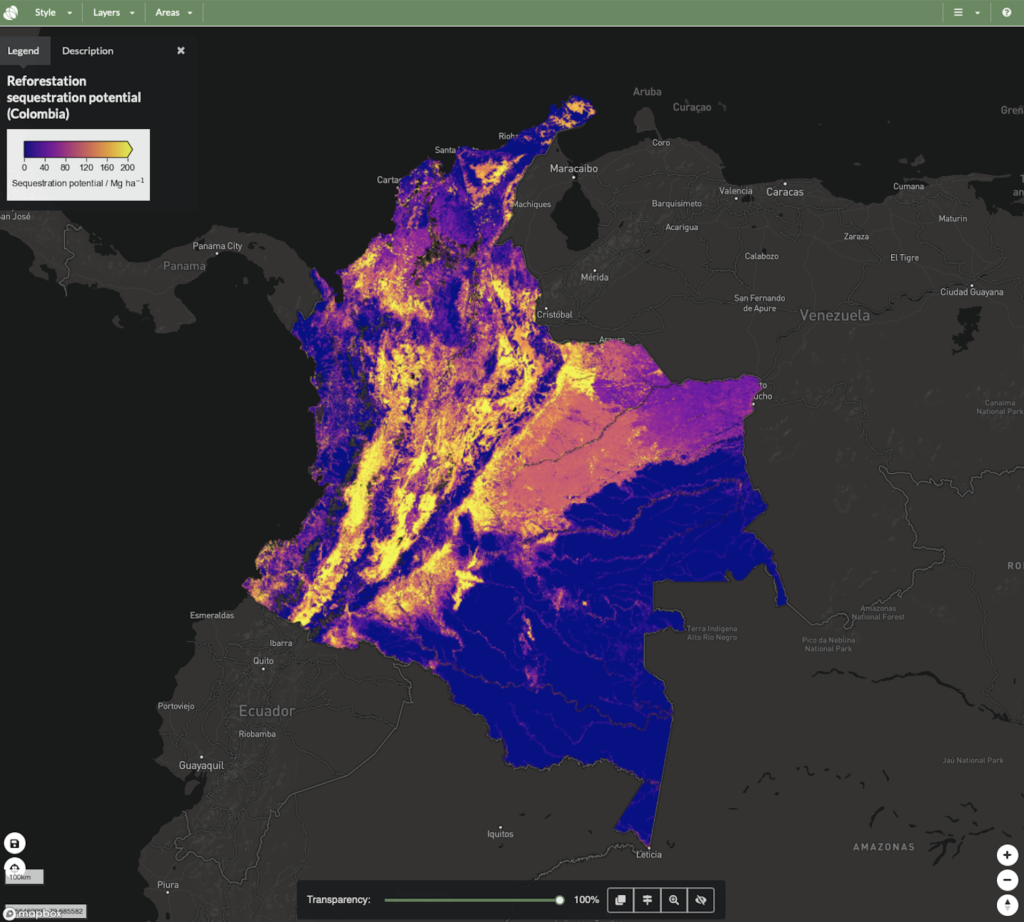Carbon Data Model Framework (CARDAMOM) (University of Edinburgh)
http://www.geos.ed.ac.uk/homes/mwilliam/CARDAMOM.html
Overview
CARDAMOM provides robust analysis of forest carbon stocks and their dynamics. By combining a range of Earth observation (EO) data with a model that provides a forecast capability for forest fire risk, climate sensitivity, and carbon sequestration capacity.

Solution benefits
- Provides a full assessment of the forest carbon and water balance, stocks and fluxes, at variable grid resolution across the study domain.
- Products are consistent with climate, soils, and forest observations.
- Combines strengths of EO data (supports spatial mapping) with process model understanding (which allows for forecast capacity) and can be updated dependent on new data availability.
- Risk of forest fire is estimated based on analysed forest state and soil moisture linked to observations of burned area.
- Model allows for exploration of scenarios of afforestation, reforestation, climate sensitivity of carbon cycling (source and sinks estimates) and fire risk likelihoods.
- Users can evaluate alternate land cover scenarios to scope effects of reforestation, afforestation, fire risk.
- Current forest biomass can be related to potential biomass under current and future climates to identify optimal areas for carbon sequestration (i.e. carbon storage).
- Modelling predicts time scales of forest response to changes in management, disturbance and/or climate.
Key technical features
- Assimilates information on canopy phenology (EO optical data), climate, soils, biomass (EO radar data, Light Detection and Ranging (LIDAR) derived) to generate a carbon cycle analysis using free data.
- Spatial resolution depends on Area of Interest (AOI) and resolution of EO input from one kilometre to 100 kilometre.
- Temporal resolution of the initial analysis is available from 2000-present in most cases (era of available EO data).
- Clear confidence intervals attached to all products.
- Outputs are shared via online tools of Ecometrica’s EO Labs, a customisable web- based application.
- The analysis is undertaken using supercomputing capacity at Edinburgh. Model forecasting will be undertaken using online tools currently under development.
Case studies
Potential biomass mapping of Columbia and Ghana to evaluate potential for carbon sequestration, timing of forest growth, and its climate sensitivity. Continued training of Brazil’s Instituto Nacional de Pesquisas Espaciais (INPE) and Kenya’s Kenya Forest Service (KFS) partners to construct bespoke country specific CARDAMOM carbon cycle analyses. The development of in country capacity allows for utilising unique country specific datasets to address local forest management challenges identifying risks and opportunities in response to changing climate (e.g. development of drought) and ecosystem disturbance (e.g. fire and logging).
Organisation overview
The University of Edinburgh is a globally significant research and education establishment, with over 35,000 students and 4,000 academic staff. It is ranked in the top 20 in world universities and has an annual income of £900M in 2016-17. Its School of GeoSciences is rated as the most powerful in the UK by a recent assessment, and includes major strength in geodatascience, remote sensing, Earth observation, forest ecology and modelling. In 2018 the University launched its Centre for Sustainable Forests and Landscapes to focus its strength in natural and social science on addressing major challenges related to global forests.

